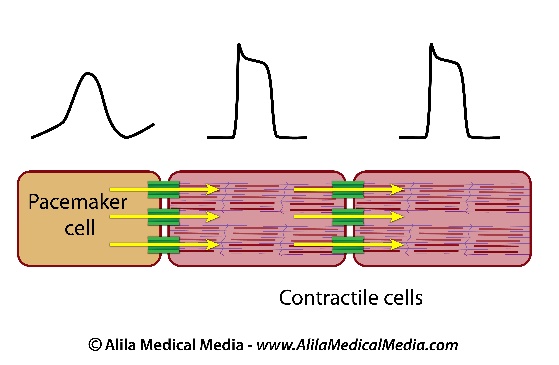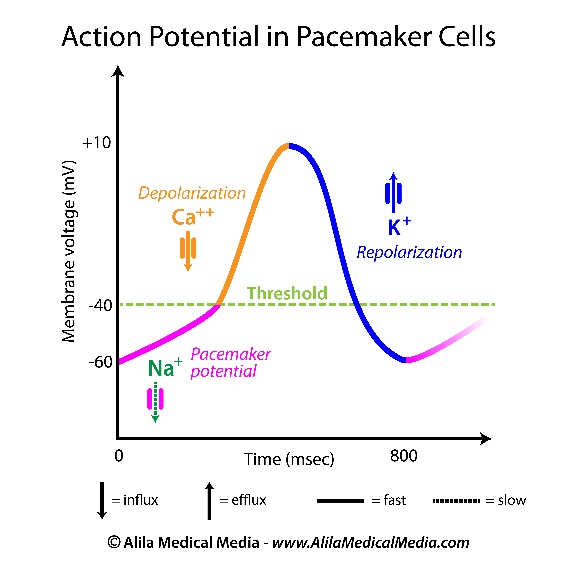Relating Cardiac Action Potential and ECG Explained Clearly
Relationship between Cardiac Action Potential and ECG explained in 4 min - It's mind-boggling how easy it is!
This lesson includes an animated video lecture, downloadable images, quiz questions and a PDF

The heart is essentially a muscle that contracts and pumps blood. It consists of specialized muscle cells called cardiac myocytes. The contraction of these cells is initiated by electrical impulses, known as action potentials. Action potentials start in pacemaker cells, then spread to contractile myocytes and stimulate them to contract.
An action potential is essentially a brief reversal of electric polarity of the cell membrane, and is made possible by the flow of ions in and out of the cell, through specific ion channels. In a resting cell, the membrane voltage is usually negative, meaning the cell is more negative on the inside.

An action potential is typically composed of a rising phase, depolarization, followed by a falling phase, repolarization.
The depolarization phase is the result of net influx of positively-charged ions. Membrane voltage increases and becomes less negative; the cell becomes less polarized, or depolarized.
Subscribe to one of the courses below to continue!
This content is available within the following courses:

Basic Fundamentals of Cardiology: 40 animations, plus downloadable PDFs, downloadable images, and quizzes.

Our Signature Animated Videos on Electrocardiography: 25 animations, plus downloadable PDFs, downloadable images, and quizzes.

Basic Fundamentals of Cardiology: 40 animations, plus downloadable PDFs, downloadable images, and quizzes.

Our Signature Animated Videos on Electrocardiography: 25 animations, plus downloadable PDFs, downloadable images, and quizzes.